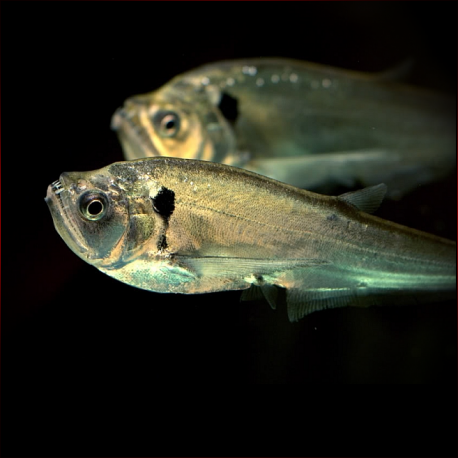More info
Datasheet
| Minimum Tank Size | 1150 litres / 303.80 US gallons |
| Maximum Size | 30.0cm / 11.81inches |
| Temperature | 24°C / 75.20°F - 28°C / 82.40°F |
| Hardness | 2.02dgH / 36ppm - 15.02dgH / 268ppm |
| pH | 6.0-8.0 |
General Description
Cynodon Gibbus, also known as Dientón, Perrito, Payara-chata, or Icanga, is a rare species in the aquarium trade that belongs to the family Cynodontidae. Easily distinguished from other species in the genus, it possesses unique characteristics such as 8 branched pelvic-fin rays and a dark band at the base of the caudal-fin rays.
Aquarium Setup
The ideal tank setup for Cynodon Gibbus involves mimicking its natural habitat of flowing streams or rivers. The aquarium should contain a mix of sand, rocks, fine gravel, and driftwood with ample open swimming space. Maintaining pristine water conditions with high oxygen levels and moderate water movement is crucial, requiring the use of external filters and regular water changes.
Behaviour
Best suited to being alone or kept with similarly-sized non-aggressive fish to avoid conflicts, Cynodon Gibbus exhibits a relatively peaceful demeanor and thrives in group settings. It is recommended to keep at least three specimens in a suitably-sized tank to promote their well-being.
Feeding and Diet
An obligate piscivore, Cynodon Gibbus primarily feeds on live prey, although captive individuals can be weaned onto dead alternatives. It is crucial to avoid feeding mammalian or avian meat and refrain from using feeder fish due to the risk of introducing parasites or diseases.
Reproduction & Dimorphism
Information regarding the reproductive habits and dimorphic characteristics of Cynodon Gibbus is not provided.
Habitat and Distribution
Found throughout the Amazon basin and parts of Venezuela and Guyana, Cynodon Gibbus prefers pelagic habitats in main river channels and larger tributaries. It coexists with its congener, C. septenarius, in various river systems, adapting to both white and black water environments.

